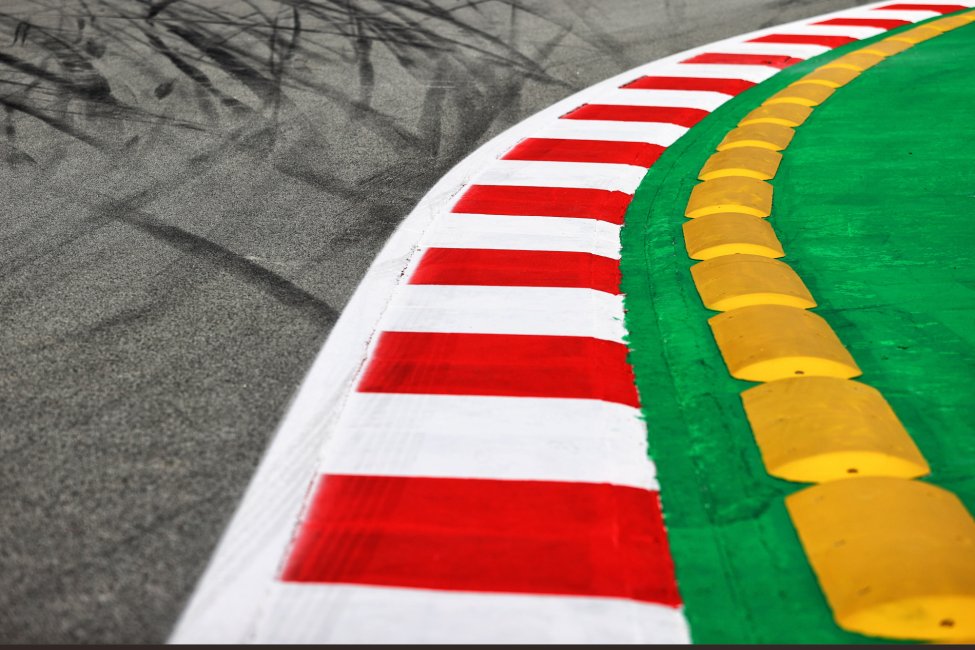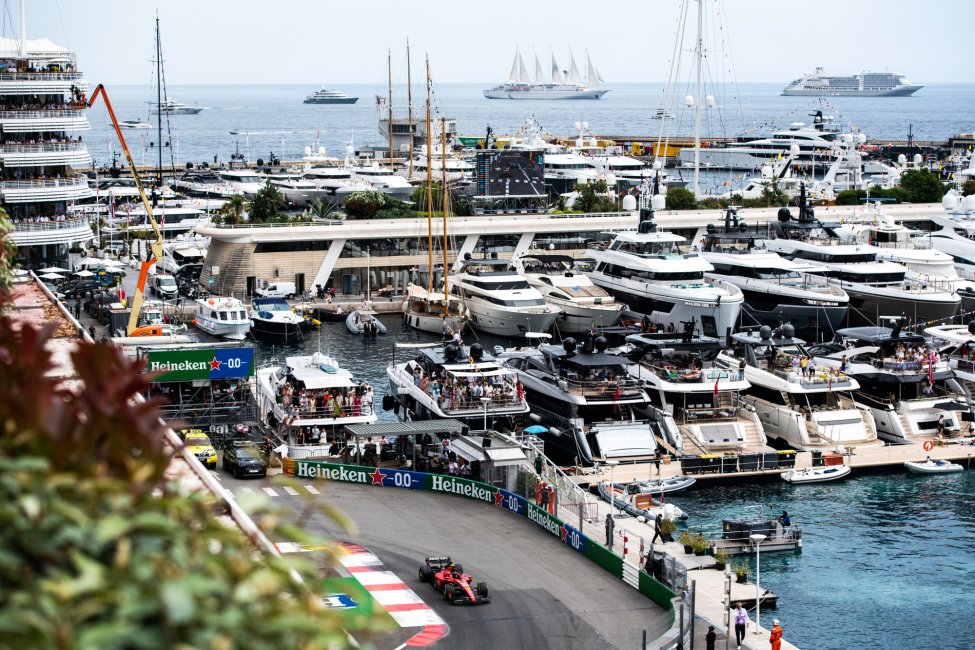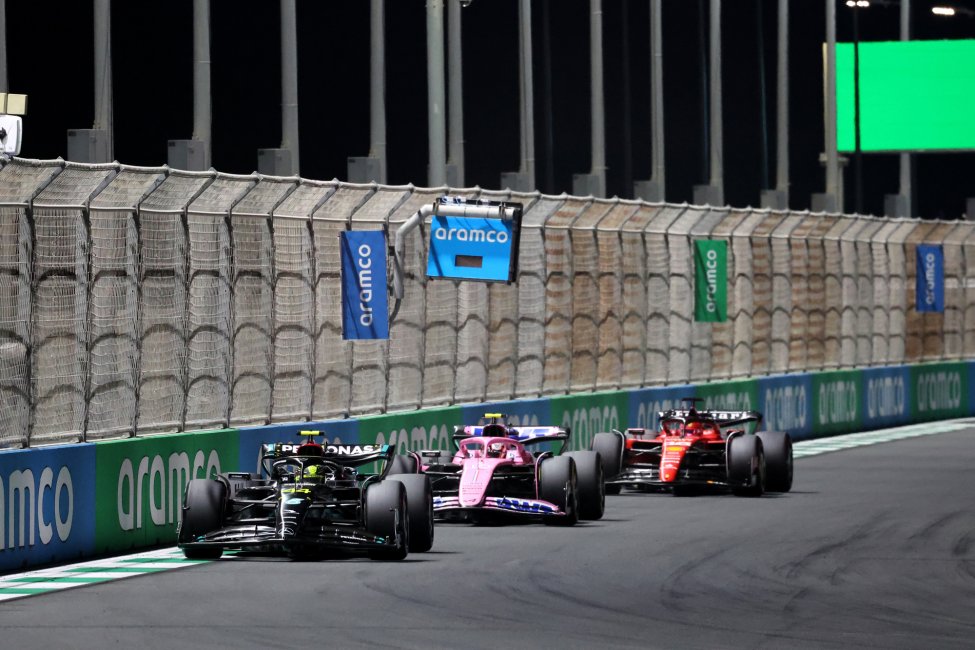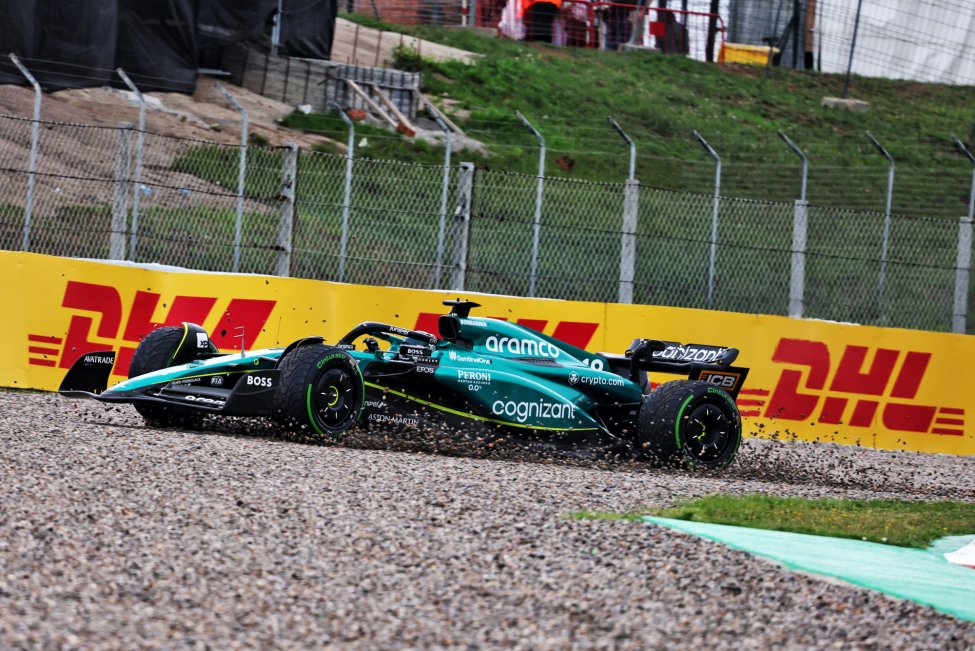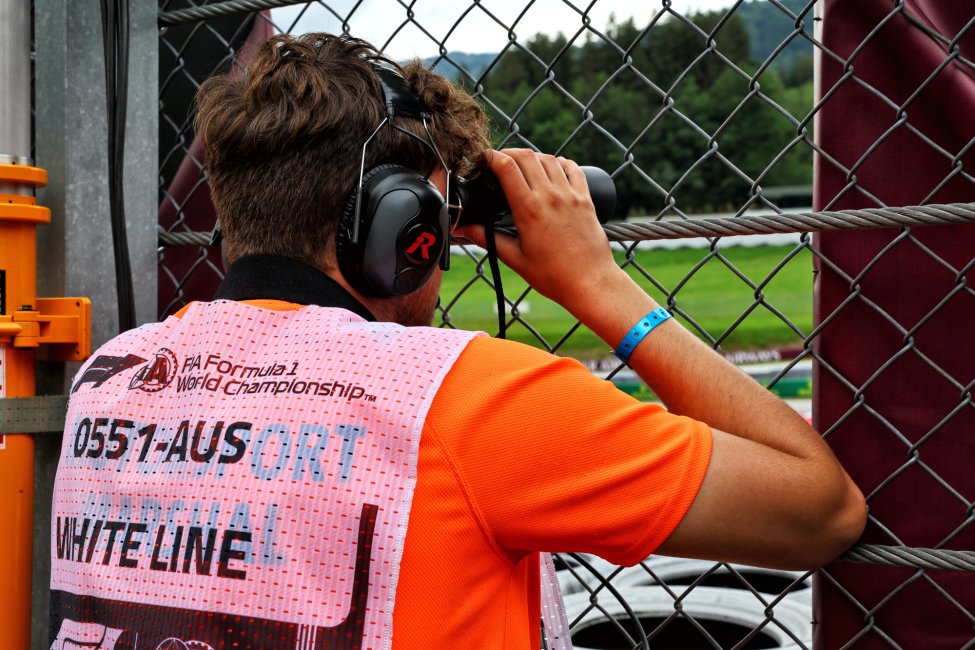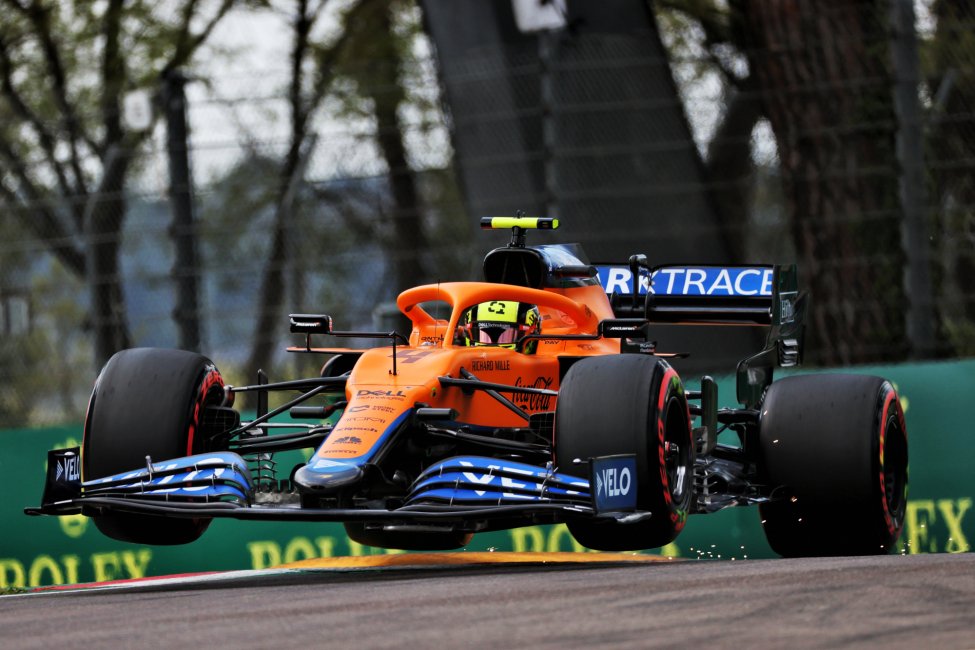Track limits
You have probably seen the term track limits come up before, for example at the Austrian Grand Prix 2023. But what exactly are track limits, why are they applied and what are the penalties for exceeding them? You can read all about it here.
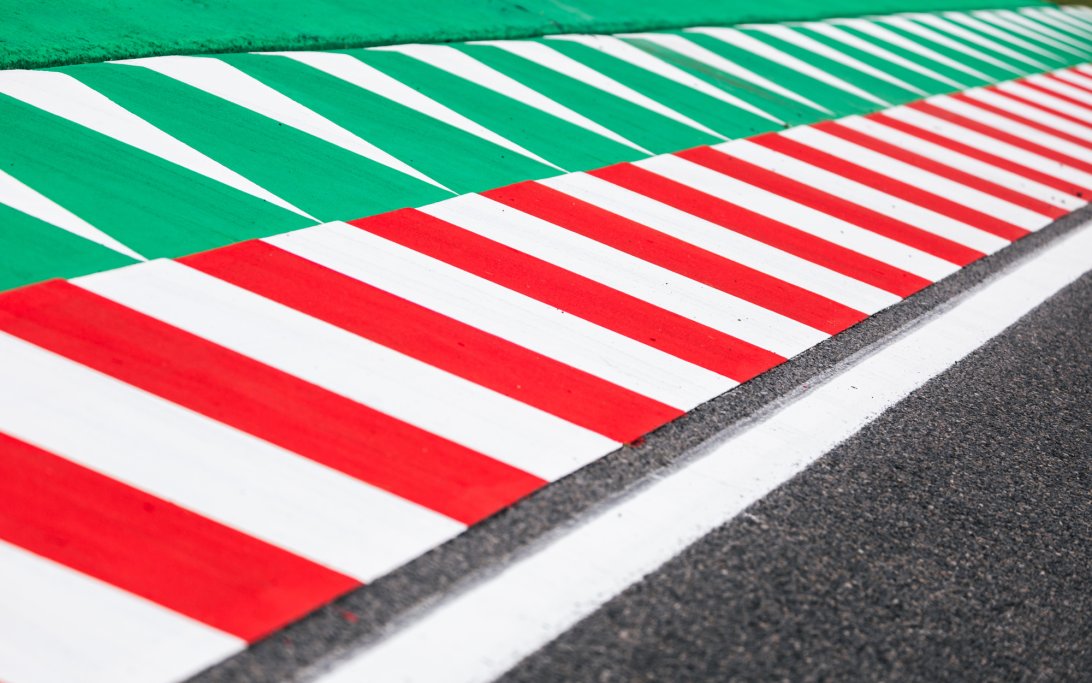
What are track limits?
The name 'track limit' really says it all, these are the limits of the track. These are marked with white lines at the end of the asphalt. There are also kerbstones (raised edge stones) in the corners that mark the track limit. These are almost always coloured red and white and serve mainly to keep drivers within the correct lines of the track.
The idea is that the driver must colour within the lines and not completely cross the white lines. This is because at least a small part of the tyre's rubber must remain on the track outside the white line. However, track limits are not always at the white line, but sometimes at the kerbstones in some corners. When this is the case, it is announced prior to a race.
Sometimes it is permissible to go completely off track with four wheels, but only in places where there is no immediate advantage. Off-track overtaking is not allowed.
At many circuits, there are large areas of asphalt outside the track, which do not help to keep the driver within the track limits of the track. This is because the consequences for driving off-track are not major here, which is the case with a gravel trap or a wall.
Why does F1 have track limits?
Without track limits, drivers could just drive off track, cut it off and overtake each other in places where this is not actually allowed. This will make for a strange sight.
How can track limits be better enforced?
To allow drivers to better enforce track limits as well as indicate them better, the following measures can be taken:
- Sausage kerbs | For example, more sausage kerbs can be placed. These are raised pieces of asphalt that are (usually) coloured yellow. It is not beneficial for a driver to drive over them, as this can cause a lot of damage to the car;
- Walls | When there is a wall next to the track, it is a clear physical boundary. This encourages the driver to be even more meticulous in enforcing the track limits. Of course, putting up a wall involves a lot more risk. Walls cannot be placed everywhere along the track either, as this can cause serious accidents
An example of a track that has walls almost everywhere around it is Monaco's street circuit. If the track limits are exceeded here, there will be major consequences; - Gravel traps | Placing gravel traps next to the tracks is another solution. A small mistake by the driver is quickly punished.
What are the penalties for exceeding track limits?
Penalties for exceeding track limits are different in qualifying and racing.
Track limits during qualifying
When a driver exceeds track limits during qualifying, his lap will be penalised. So the time the driver set, where he exceeded the track limits, does not apply. The time recorded is the time of the previous correct lap driven.
Track limits during the race
During the race, a driver may exceed the track limits three times without consequences. When a driver has done this three times, his engineer will warn him over the board radio and the driver will be given the black and white flag. Should the track limits be exceeded for the fourth time, the driver will receive a five-second penalty.
Should the track limits be exceeded for the fifth time, a 10-second penalty will be handed out. After this, the counter is reset to five seconds again.
Since the 2021 Austrian Grand Prix, drivers will receive a double penalty if the track limits are exceeded in the last corner, as the stewards believe you have an advantage by entering the new lap at more speed.
Previously, drivers were still given 1 penalty point on their licence after exceeding the track limits, but this has now been abolished. This is because it does not pose an immediate danger and is a minor offence.
Notable cases with track limits
Here are some notable moments where track limits were an important part:
Track limits Austria 2023
One notable race where a lot of track limits were handed out was at the 2023 F1 Austrian Grand Prix. The FIA was busy as they had to investigate some 1,200 possible track limits. A few hours after the race ended, even 12 penalties were handed out that affected the result.
Interestingly, Nico Hulkenberg was even given a black and white flag during the race after he had already been eliminated.
Eight different drivers were penalised one or more times after exceeding the track limits. Esteban Ocon, for example, received four penalties, with a total of 30 seconds of time penalty thrown at him.
Track limits Bahrain 2021
At the start of the 2021 Formula 1 season, track limits were also the talk of the day. At the Bahrain circuit, Lewis Hamilton went off track at least 30 times at turn four, for which he received no penalty due to a grey area in the regulations. Max Verstappen overtook the Briton off track for the lead at the same turn four, but had to hand back his position. This cost him the victory.
Track limits United States 2017
Max Verstappen overtook Kimi Raikkonen three corners before the finish to secure the final podium spot. The Dutchman was already in the cooldown room getting ready for the podium ceremony, but was called back for exceeding the track limits. As a result, he received a five-second time penalty and had to hand his podium spot back to Raikkonen.
Emilia-Romagna 2021 track limits
Lando Norris did not have luck on his side during qualifying at the Imola circuit. He was on his way to securing third position on the grid for the race the next day, but due to crossing track limits and having his fast lap taken away, he fell back to seventh starting position.
Criticism about track limits
There is always a lot of criticism about track limits, as it could get in the way of great racing, for example. There are also often ambiguities about enforcing track limits and consistency when handing out penalties. Valtteri Bottas, for example, wanted to raise track limits with the FIA in 2021 because they would cause confusion.
Red Bull Racing was also not happy after the 2021 Portuguese Grand Prix, with track limits wiping out Max Verstappen's pole position and taking away his fastest race lap. Christian Horner and Helmut Marko disagreed.
George Russell commented in 2022 that things were getting a bit out of hand with track limits handing out penalties and that it should not be judged so black and white.
Opinion of Formula 1 fans
The poll posted by RacingNews365 shows that almost half of Formula 1 fans think drivers should be punished for exceeding them track limits. Almost 30 percent thinks they should be able to do it if it means its faster.
Don't miss out on any of the Formula 1 action thanks to this handy 2026 F1 calendar that can be easily loaded into your smartphone or PC.
Download the calender